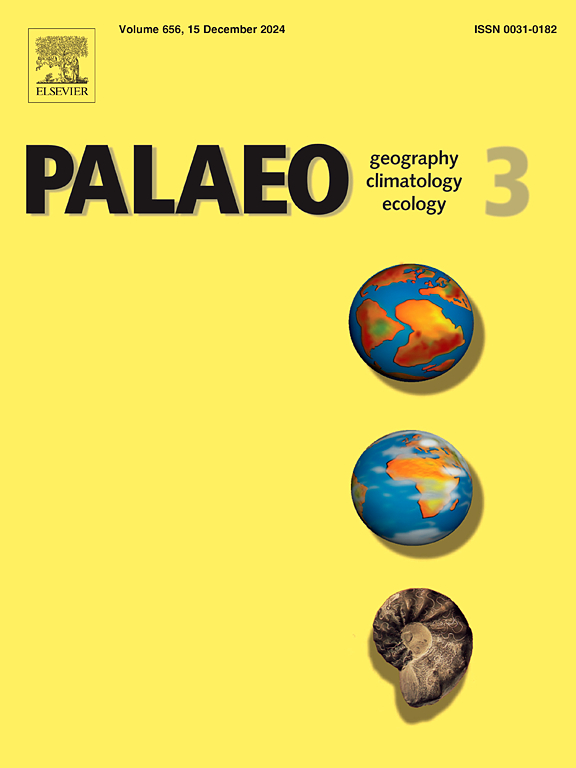Quantitative climate reconstruction of the Mid- to late Holocene based on pollen records from Northern Shandong, China
IF 2.6
2区 地球科学
Q2 GEOGRAPHY, PHYSICAL
Palaeogeography, Palaeoclimatology, Palaeoecology
Pub Date : 2025-02-17
DOI:10.1016/j.palaeo.2025.112815
引用次数: 0
Abstract
Pollen serves as a critical proxy for quantitative paleoclimatic reconstruction, with high-quality modern pollen databases and advanced modeling approaches significantly enhancing the reliability of reconstructed climatic parameters and providing multifaceted insights into past climate dynamics. This study presents a quantitative paleoclimatic reconstruction based on pollen analysis from the Dingjiazhuang profile in northern Shandong, China. The LWWA (inverse) model at 900 km was identified as the optimal model for climatic parameter reconstruction. Our results delineate periodic changes of Mid- to Late Holocene climate in the study area through reconstructed curves of annual precipitation (Pann), mean precipitation of the warmest month (MPwa), mean temperature of the warmest month (MTwa), and mean temperature of the coldest month (MTco) spanning 8–2.6 ka. Five distinct climatic phases were identified: A cool-dry fluctuation phase (8.1–6.8 ka), a warm-humid Mid-Holocene Climatic Optimum (6.8–6.2 ka), a transitional cool-humid phase (6.2–5.3 ka), a warm-dry phase (5.3–3.1 ka), and a cool-dry phase (3.1–2.6 ka). Millennial-scale variations were predominantly driven by the interplay between the East Asian Summer Monsoon (EASM) and East Asian Winter Monsoon (EAWM). Centennial-scale anomalies include 8.2 ka, 5.5 ka, and 4.2 ka events. The complex forcing mechanisms underlying these events warrant further investigation. This study represents the first attempt to establish climate quantification in northern Shandong, providing critical data support for understanding the environmental evolution of the East Asian monsoon region during the Holocene.
求助全文
约1分钟内获得全文
求助全文
来源期刊
CiteScore
5.90
自引率
10.00%
发文量
398
审稿时长
3.8 months
期刊介绍:
Palaeogeography, Palaeoclimatology, Palaeoecology is an international medium for the publication of high quality and multidisciplinary, original studies and comprehensive reviews in the field of palaeo-environmental geology. The journal aims at bringing together data with global implications from research in the many different disciplines involved in palaeo-environmental investigations.
By cutting across the boundaries of established sciences, it provides an interdisciplinary forum where issues of general interest can be discussed.

 求助内容:
求助内容: 应助结果提醒方式:
应助结果提醒方式:


